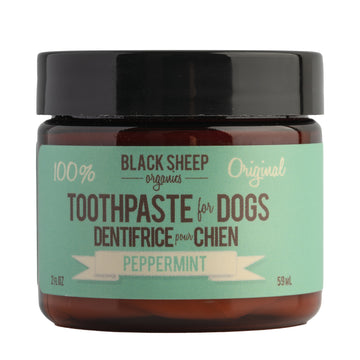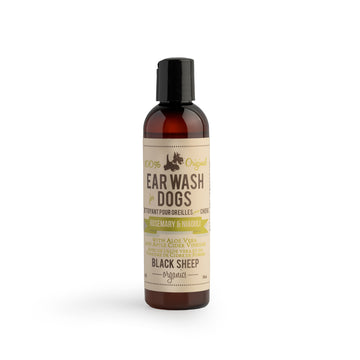Grooming your dog can seem overwhelming, especially if you're a first-time pet owner. This guide offers essential steps for maintaining your dog's hygiene and overall well-being. From brushing and bathing to nail trimming and ear cleaning, we'll provide clear instructions and helpful tips to ensure a stress-free grooming experience for both you and your furry friend. Follow along to learn how to groom a dog like a pro!
What Are The 7 Steps of Grooming a Dog?
Grooming a dog typically involves seven fundamental steps to ensure that your pet remains clean, healthy, and comfortable. Here’s a breakdown of each step:
Step 1: Brushing
Why It's Important: Brushing removes dirt, dead hair, and prevents mats and tangles. It also stimulates the skin's natural oils, promoting a healthy coat.
How to Brush:
- Frequency: Brush your dog at least once a week. Dogs with longer or thicker coats may need more frequent brushing.
- Tools: Use the appropriate brush for your dog's coat type (slicker brush for long coats, bristle brush for short coats).
- Technique: Start at the head and work your way down to the tail. Be gentle around sensitive areas like the belly and legs.
Step 2: Bathing
Why It's Important: Regular baths keep your dog's skin and coat clean. It helps remove dirt, allergens, and parasites.
How to Bathe:
- Frequency: Bathe your dog every 4-6 weeks. Overbathing can strip natural oils from the coat.
- Products: Use a dog-specific shampoo that matches your pet's skin type. Avoid human shampoos—they can be too harsh(Use natural dog shampoo for dogs with sensitive skin).
- Technique: Wet your dog thoroughly, apply shampoo, and massage it into the coat. Rinse well to remove all soap residues.
|
Product Type |
Recommended For |
|
Oatmeal Shampoo |
Sensitive Skin |
|
Flea & Tick Shampoo |
Parasite Control |
|
Hypoallergenic Shampoo |
Allergic Reactions |
Step 3: Nail Trimming
Why It's Important: Overgrown nails can cause discomfort and lead to health issues like infections or misaligned joints.
How to Trim Nails:
- Frequency: Trim your dog's nails once a month.
- Tools: Use a guillotine-style nail clipper or a rotary tool.
- Technique: Hold the paw firmly and trim the tip of each nail. Avoid cutting into the quick (the blood vessel inside the nail).
Step 4: Ear Cleaning
Why It's Important: Regular ear cleaning prevents infections and removes wax buildup.
How to Clean Ears:
- Frequency: Check and clean ears once a week.
- Tools: Use a vet-recommended ear-cleaning solution.
- Technique: Apply the solution into the ear canal, gently massage the base of the ear, and wipe away debris with a cotton ball.
Step 5: Teeth Brushing
Why It's Important: Brushing your dog's teeth reduces the risk of dental diseases, bad breath, and tooth loss.
How to Brush Teeth:
- Frequency: Brush your dog's teeth at least 2-3 times a week.
- Tools: Use a dog-specific toothbrush and toothpaste.
- Technique: Lift your dog's lip to expose the teeth and gums. Brush in small circles, focusing on gum lines.
Step 6: Fur Trimming
Why It's Important: Trimming keeps your dog's coat manageable and helps prevent matting, especially in long-haired breeds.
How to Trim Fur:
- Frequency: Trim as needed based on hair growth.
- Tools: Use grooming scissors or clippers designed for dogs.
- Technique: Trim around the face, paws, and sanitary areas. Be cautious and take your time to avoid nicks.
Step 7: Final Checks and Praises
Why It's Important: This final step ensures you've covered everything and allows you to bond with your pet.
Final Checks:
- Inspect for any signs of skin irritation, parasites, or abnormalities.
- Check that your dog is comfortable and content.
Praises:
- Offer treats and verbal praises to reinforce positive behavior.
- Spend a few minutes playing or cuddling to end the grooming session on a positive note.
Is It OK to Groom Your Dog Yourself?
Absolutely! Grooming your dog at home can be a rewarding experience for both you and your pet. Let's look at the benefits, situations where professional grooming might be needed, and the basic tools you'll need for DIY grooming.
Benefits of Grooming Your Dog at Home
- Cost Savings:
- Regular trips to a professional groomer can add up. DIY grooming can significantly reduce these costs.
- Reduced Stress:
- Some dogs get anxious or stressed during visits to the groomer. Grooming at home in a familiar environment can be more calming for your pet.
- Bonding Time:
- Grooming sessions provide an opportunity for quality time with your dog. This helps build trust and deepen your bond.
When to Consider Professional Grooming?
While grooming at home has its advantages, there are times when professional help might be necessary:
- Complex Grooming Needs: Dogs with certain coat types or breeds with specific grooming requirements (like poodles or terriers) might benefit from professional grooming.
- Health Concerns: If your dog has skin conditions, allergies, or other health issues, a professional groomer trained to handle these situations might be a better choice.
- Time Constraints: Grooming can be time-consuming. If your schedule is tight, professional grooming might save you time and effort.
Basic Tools You'll Need for DIY Grooming
To get started with DIY grooming, you’ll need a few essential tools. Here’s a handy list to ensure you have everything covered:
|
Tool |
Purpose |
|
Brush |
Removes dirt, dead hair, and prevents matting |
|
Shampoo |
Keeps the coat clean and healthy |
|
Conditioner |
Softens the fur and prevents tangling |
|
Nail Clippers |
Keeps nails trimmed and prevents overgrowth |
|
Ear Cleaner |
Removes wax buildup and prevents infections |
|
Toothbrush and Dog Toothpaste |
Maintains dental hygiene |
|
Scissors/Clippers |
Trims fur, maintaining a neat appearance |
Should You Brush or Bathe a Dog First?
The answer is straightforward: always brush before bathing. Here's why brushing first is crucial, and some practical tips on how to do it effectively.
Importance of Brushing Before Bathing
Prevents Mats and Tangles:
- Brushing removes loose fur, dirt, and debris. It also prevents mats from getting tighter when wet, which can be uncomfortable for your dog and harder to remove later.
Ensures an Even Clean:
- Without brushing, dirt and dead hair can trap moisture during the bath, leading to skin irritation. Brushing ensures the shampoo reaches the skin evenly.
Reduces Shedding:
- Regular brushing helps control shedding. By removing loose hair beforehand, you'll notice less fur floating in the bathwater and around your home.
How to Properly Brush Your Dog to Remove Tangles and Mats?
- Choose the Right Brush:
Choosing the right brush depends on your dog's coat type. Here are some tips to help you select the most suitable brush:
- Short, Smooth Coats: A bristle brush helps distribute natural oils, making the coat shiny.
- Long, Silky Coats: A pin brush with rounded tips can glide through long hair without causing damage.
- Curly or Wavy Coats: A slicker brush works well to remove mats and tangles in curly or wavy coats.
- Double Coats: An undercoat rake reaches through the topcoat to remove loose undercoat hair, which is essential for breeds that shed seasonally.
- Start with Gentle Strokes:
- Begin by gently brushing your dog's coat. Avoid pulling or tugging, especially if you encounter a mat or tangle.
- Focus on Problem Areas:
- Pay special attention to spots where mats often form, such as behind the ears, under the legs, and around the tail.
- Use a Detangler Spray:
- A detangler spray can help loosen stubborn mats. Spray lightly and gently work the mat out with your fingers before brushing.
- Check for Skin Issues:
- While brushing, keep an eye out for any signs of skin problems like redness, bumps, or parasites. If you notice anything unusual, consult your vet.
Grooming your dog at home can be a rewarding and enjoyable experience. By following the essential steps and avoiding common mistakes, you’ll ensure your pet stays clean, healthy, and happy. Remember to use appropriate tools and products, be gentle with sensitive areas, and maintain a regular grooming schedule. With patience and practice, you'll become more confident and skilled in keeping your furry friend looking and feeling their best.











